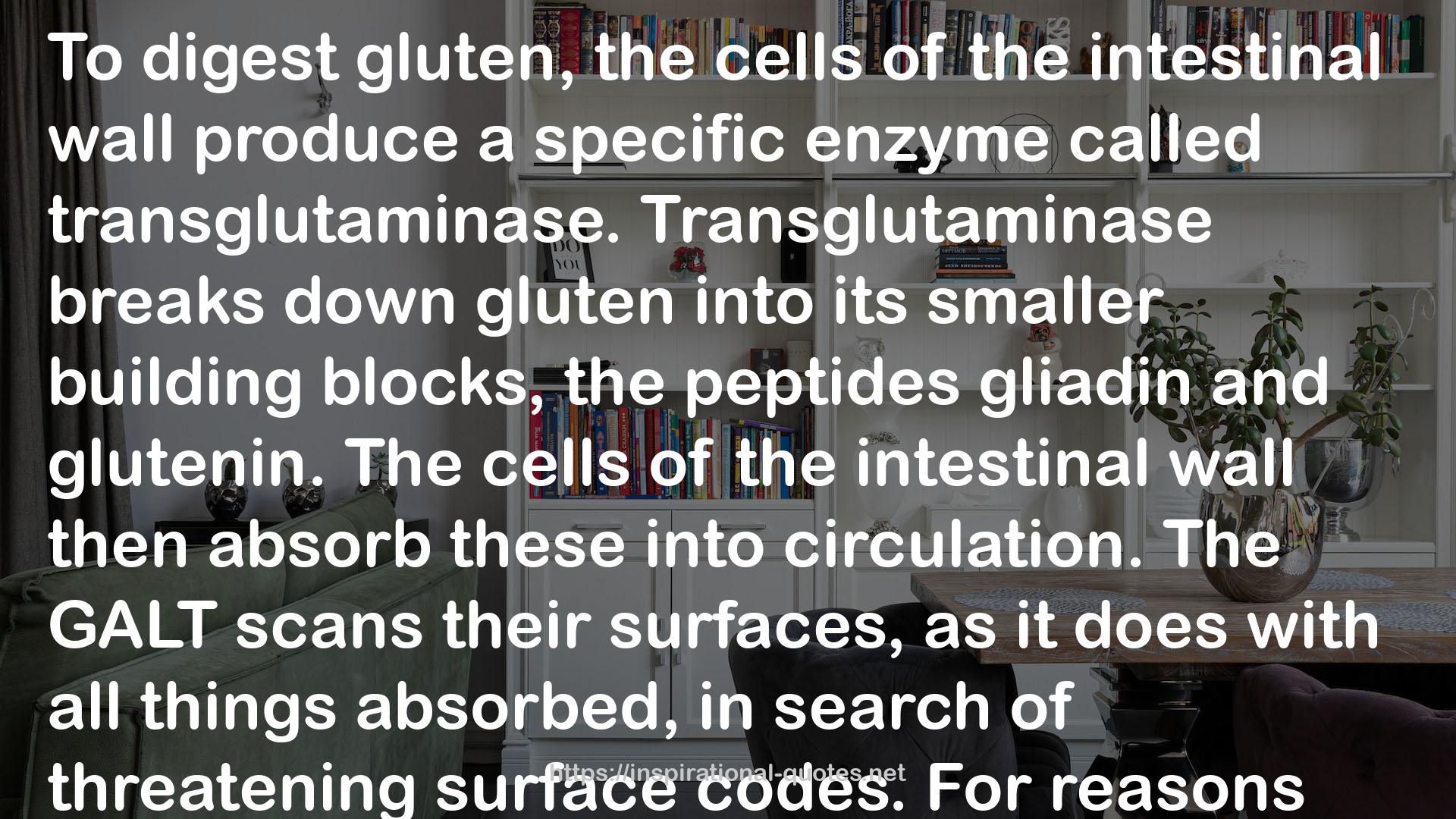" To digest gluten, the cells of the intestinal wall produce a specific enzyme called transglutaminase. Transglutaminase breaks down gluten into its smaller building blocks, the peptides gliadin and glutenin. The cells of the intestinal wall then absorb these into circulation. The GALT scans their surfaces, as it does with all things absorbed, in search of threatening surface codes. For reasons that only nature understands, the surface of the glutenin peptide is not coded as threatening, but gliadin is in people with a genetic predisposition. T cells in the GALT will mediate the production of gliadin antibodies. These same antibodies, however, often attack the intestinal wall’s natural transglutaminase enzyme, essentially tearing apart the intestinal wall, piece by piece. This shrinks and erodes the villi and microvilli, the finger-like tendrils in the small intestine that maximize its surface area; this results in an inability of the small intestine to absorb any nutrients at all. In its most severe expression, this is known as celiac disease, which presents as weight loss, diarrhea, bloating, abdominal pain, and an overall failure to thrive. "
― Alejandro Junger , Clean Gut: The Breakthrough Plan for Eliminating the Root Cause of Disease and Revolutionizing Your Health
